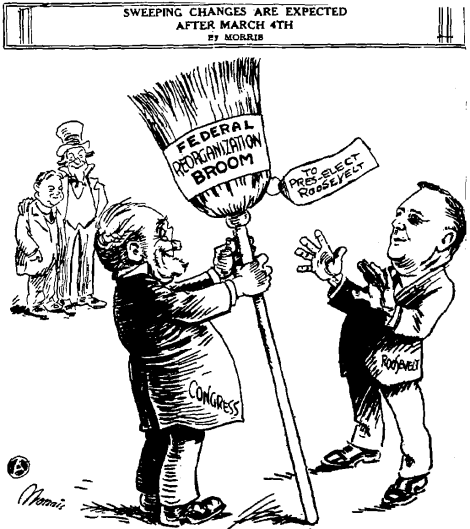
One of the pillars of the New Deal, the National Labor Relations Act (aka the Wagner Act) gave American workers the right to organize in most workplaces. Prior to 1935 employers had free rein to prevent workers from forming unions. Bitterly opposed by the Republican Party and Big Business, the new law set off an explosion of unionization in the 1930s and 40s that, in turn, formed the basis for the postwar prosperity of working families—also known as the Great American Middle Class.
Under the NLRA it became illegal for an employer to punish organizers for trying to form a union (though they often do). In unionized workplaces, the law requires employers and unions to bargain in good faith (though they often do not). Yet, while workers have these rights under the NLRA, under a recent court ruling, they don’t have the right to be informed of them.
Recently, the D.C. Circuit Court of Appeals knocked down an attempt by the National Labor Relations Board to rectify a long-standing loophole in the original law. The Board had issued a new ruling that would require employees’ rights to be posted in the workplace, just as minimum wage, health, and safety rules must be posted.
The court, considered the most important in the country after the Supreme Court because it decides cases on government policy and regulation, thought otherwise. Bowing to powerful interests like the U.S. Chamber of Commerce, it overturned the Board’s ruling. Apparently such posters would interfere with the smooth operation of business.
The court’s stance is no surprise, given that its judges are largely holdovers of the Bush Administration. Thanks to Republicans obstructing President Obama’s judicial appointments in the U.S. Senate, only one new judge has been approved to serve on the D.C. Court despite several vacancies.
This is just the latest in a series of attacks on the NLRA going back to the Reagan Administration. Conservative appointments and court rulings have hamstrung the NLRB, which itself is weakened from vacancies, further undermining the labor movement. Presently, the Board does not even have a quorum because of Republican and business opposition, and a failed effort by Obama to do an end-run around the Senate by making recess appointments.
Download NLRA Employee Rights PDF






